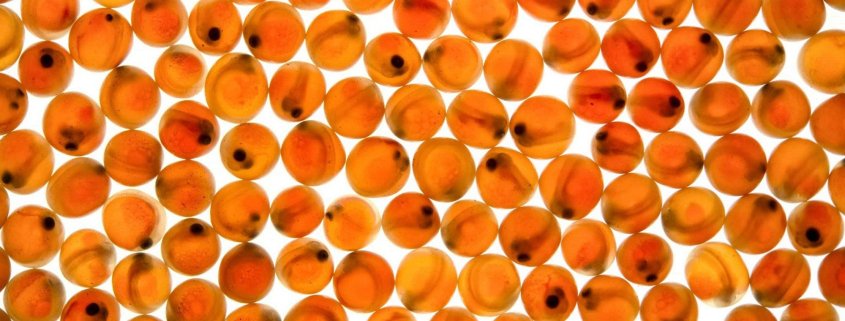
UPDATE: In April 2024, Fisheries Journal Magazine published A Review of Pacific Salmon Hatcheries in British Columbia, Canada, and Interactions With Natural Populations, authored by Brian E. Riddell, Isobel Pearsall, and Andrew Rosenberger. Read the journal article here.
About the Review
The Hatchery Effectiveness Review aims to conduct a science-based review of hatchery effectiveness in BC. Currently there are several component parts of this review, including the following:
1. Assessment of trends in biological traits
This project assesses whether there is any evidence for changes in size at age, age composition, and sex ratios of hatchery populations throughout BC. Focus is primarily on hatchery Chinook salmon.
2. Are hatcheries effective?
This project aims to determine whether hatcheries are meeting their production objective (e.g. conservation, recovery, harvest, assessment). The outcomes (contributions of hatchery fish to catch and escapement) are assessed against the original objective.
3. Interactions between wild and enhanced populations
This component of the effectiveness review aims to determine whether there are interactions between wild and enhanced populations. Specifically, spatial/temporal stock recruit analyses are being carried out to identify impacts to wild populations.
We are also carrying out a systematic literature review to look at wild-hatchery interactions and the impacts of hatchery fish on wild fish.
The goal of this systematic review is to assess, both qualitatively and quantitatively, the current weight of evidence in the literature pertaining to the effects of hatcheries on wild salmon populations. The scope of the review is broad- temporally, geographically, and taxonomically- to clearly establish the current state of our knowledge on the consequences of enhancement for wild salmon. The review will clarify the nature and variety of these interactions, as well as their severity, and collate the recommendations of hundreds of authors for the mitigation of negative effects and unintended consequences of salmon hatcheries.
The estimated number of publications that will be included in the review is 400. Currently, data are being collated from these publications and include: Publication type, Year, Creator, Title, Publication, Abstract, Location (broad), Location (specific), Water body, Hatchery, Species, Interaction type (broad), Interaction type (specific), Study type, Stats, Sample size (OOM), Timescale (years), Effect description, Effect direction, Recommendations, Bias/Limitations, Takeaway(s)
4. What is the role of community hatcheries?
The final component of the Hatchery Effectiveness Review is to conduct a Community Hatchery Interview program in partnership with the Department of Fisheries and Ocean Salmonid Enhancement Program (SEP). The program will evaluate how best to support community hatchery programs to achieve their goals by carrying out an interview process (either by phone or video conferencing (i.e. Zoom)) with all of the CEDP managers and select managers from PIP facilities.
The aim is to better understand how the hatchery interacts with the community, the fish production objectives and practices of the hatchery (e.g. broodstock collection, rearing practices, release strategies, marking and monitoring programs, etc.), any experiments that the hatchery has conducted or intends to conduct to explore better hatchery strategies, that data collected, and opinions and knowledge of the interviewees. This information will be compiled and reviewed in a summary report that will be available to all partners and participants upon completion.
In part, this work will be used to build a financial and program needs package for the community scale enhancement activities that SEP/DFO, the Province, and BCSRIF can utilize. If funding can be used more effectively, community hatcheries and SEP overall will be more capable of conserving and managing Pacific salmon stocks.
The hatchery effectiveness review program will be completed by June 2022, and will incorporate all components listed above.
